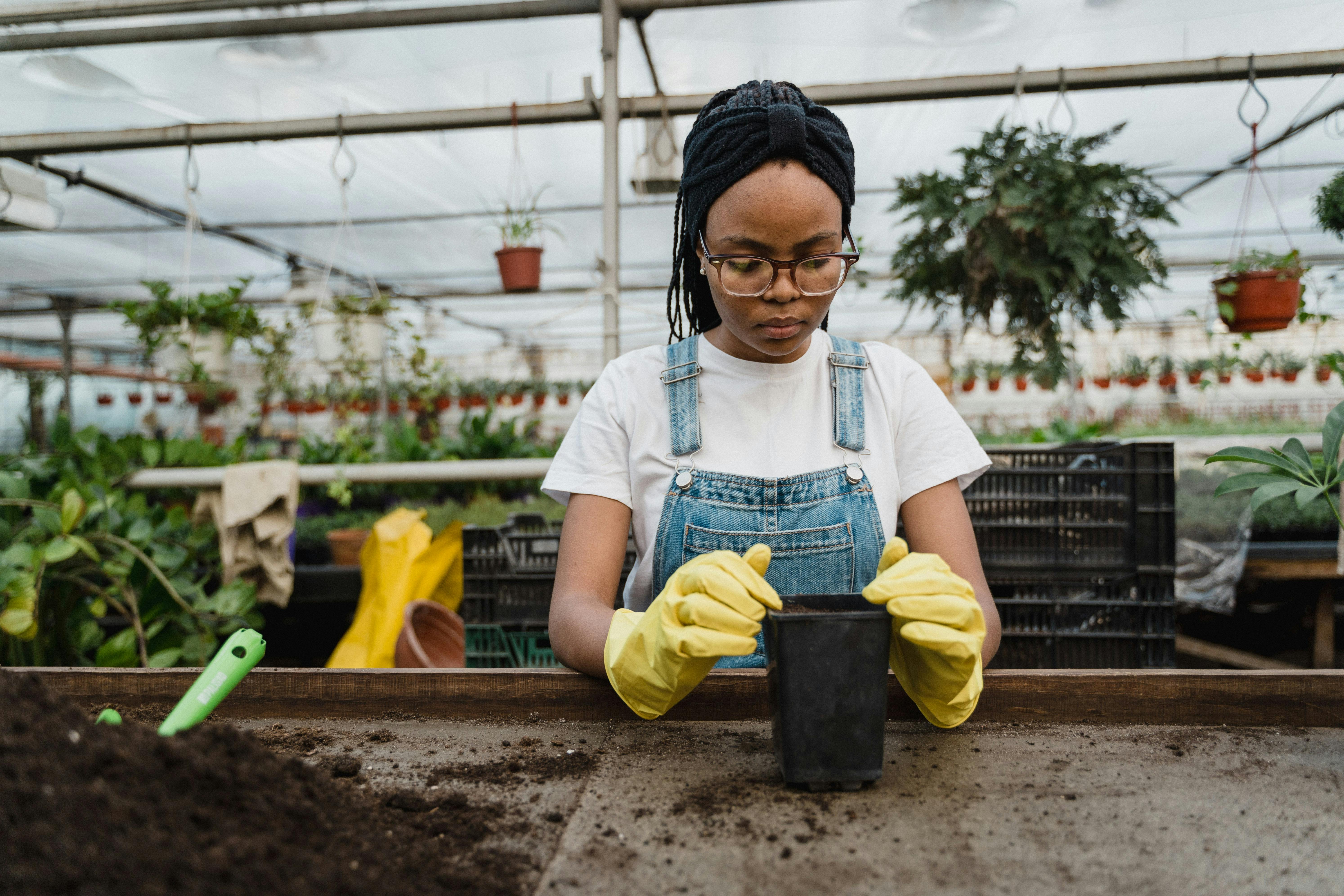Easy Madagascar Organic Herb Growing: Simple Guide for Safer Harvests
Ever since I first visited Madagascar—well, honestly, who isn’t mesmerized by the sheer diversity here?—I’ve been obsessed by the way herbs truly taste different when home-grown, and organically so. Quick story: My first attempt was a total flop. I overwatered everything, used generic soil, forgot the nuances of shade, and the cilantro basically curled up and croaked. But it was a turning point. Now, years later, I can genuinely say the flavor difference is undeniable, and the safety assurance—what you and your family actually put on the plate—matters more than ever.
Growing your own organic herbs in Madagascar is nothing short of liberating. Even in the smallest backyard, or—believe it or not—a windowsill in the bustling capital, Antananarivo, you can cultivate fresh mint, basil, thyme, or those wild Malagasy greens that you’ll literally never get imported. And before you ask, yes: it’s possible, easier than most think (assuming you dodge the mistakes I made early on), and worth every ounce of real effort.
Why Grow Organic Herbs in Madagascar?
Funny thing is, before I started, I assumed “organic” meant just expensive labels. But here in Madagascar—where local produce often travels wild distances, and imported, packaged herbs can be weeks old—the difference is almost comical. Why trust third-party sprays, chemical treatments, or plastic wrap when your own windowsill or yard can provide mint that remains fragrant for days longer? Plus, with Madagascar’s unique biodiversity, you get access to herbs you simply won’t find anywhere else. Let that sink in for a second.
From my perspective, there are five core reasons:
- Total control over what goes into your food—no hidden chemicals or “surprise” additives.
- Ridiculously fresh flavor—basil straight from the plant is a revelation compared to store-bought.
- Steep reduction in food miles and packaging—better for Madagascar’s delicate ecosystem.
- Opportunity to trial native Malagasy herbs not available elsewhere.
- A sense of daily satisfaction and connection (this is where the magic is for me).
Choosing the Right Herbs for Home Growing
Okay, let’s step back and actually clarify something: Not every herb does well in every part of Madagascar. Coastal climates, highland altitude, rainfall, sun, soil acidity—these aren’t textbook variables but living, breathing realities here. In my experience, start simple:
- Pick 2-3 hearty herbs: Basil (“basilic”), Mint (“anana”), and Thyme (“thyma”) do best almost everywhere. I go back and forth about parsley, since it’s a little picky about shade and humidity.
- For local authenticity, try Malagasy pepper leaves, or “Tsiperifery”—a native pepper vine with genuine culinary punch.
- If you have regional soil (red clay, for example), start with indigenous lemongrass. It practically grows itself.
I’m partial to mint personally—strikes me as nearly foolproof. But if you want genuine flavor diversity, explore what’s available at local zebu markets. Ask around. People love to share which varieties thrive in their neighborhood—sometimes, you get seeds or cuttings just for asking.
Soil Preparation Basics (Madagascar Edition)
Last month, during a roundtable with local agroecology folks, someone asked, “Is red laterite soil really any good for herbs?” My take is, it’s not perfect—but it works, with some basic tweaks. Don’t be fooled by garden center bags claiming miracle results. In Madagascar, it’s often about working with what you’ve got at hand:
- Loose, well-draining soil wins. Mix red clay with coconut coir or compost for best results.
- Leave a bit of leaf mulch as protective cover—slows evaporation during those blazing hot afternoons.
- Do a quick pH test using litmus strips (yes, they’re available in larger towns)—most herbs prefer slightly acidic.
My learning curve was steep. First year? I added far too much compost, and the herbs went bonkers—growth yes, but flavor? Bland, almost watery. So now, I balance homemade compost with a touch of sand, if I can get some—a mix that, to me, is pretty much foolproof for beginners.
Which brings me to the next part: Foundations matter. Get your soil right, and, frankly, everything else just flows so much easier.
Connecting Culture, Community & Sustainable Futures
I’ll be completely honest: Before working with local communities, I never realized how deeply herb cultivation is woven into Madagascar’s culture. In rural settings, elders will hand over a handful of “voanjo” leaves with herbal lore attached, explaining how each plant fits into health, celebration, and everyday meals. From my perspective, this is where home herb gardening supercharges not just flavor, but identity, safety, and sustainability.
In Madagascar, herbs are foundational. They’re ground up for sambos, brewed into local teas, and, perhaps most interestingly, used as natural remedies—a tradition that stretches well beyond colonial influence and into millennia-old local wisdom6. Ever tried sipping hot ravimbomanga tea after a rainstorm? What a difference!
Let me clarify: There’s a huge opportunity for future generations in keeping these traditions alive. My thinking has evolved from gadgets and “perfect” hydro setups toward earthier methods. Why? Because, for the most part, they really work—and they deepen your connection with local culture.
Seasonality & Sustainable Planning
Now, I get a lot of questions about seasonality. Madagascar’s “winter” (June-August) is mild, but humidity spikes. Summer is hot, sometimes dry—sometimes “insanely” wet. Here’s what’s worked for me, over years and garden seasons:
- Plant mid-March to avoid heavy cyclone rains. If it’s storm season, stick to pots—that way you can move plants indoors quickly.
- Dry spells? Mist leaves and mulch heavily.
- During humidity spikes, cut watering in half and increase spacing between plants—genuine game-changer for preventing fungus.
- Track local weather, and get into the habit of “feeling” the soil daily. You’ll start noticing patterns, and local growers love to share tips.
Safety & Accessibility
By and large, organic herb growing is one of the safest food practices you can adopt in Madagascar. Still, there are accessibility issues. Not everyone can afford commercial compost, fancy watering cans, or (believe it or not) even a reliable outdoor plot.
- Repurpose yogurt cups, plastic bottles, or even old shoes as pots. It’s quirky, but effective.
- Tap into local “foires” and small markets for seed access—costs are a fraction, plus you’ll meet other experimenters.
- Start small; windowsill herbs are perfect for rented spaces in urban centers.
- Studies show simple organic growing methods can reduce food costs by up to 40% for Malagasy families8.
Long-Term Repurposing and Culinary Magic
Here’s the thing: When you master home herb growing, you unlock endless culinary creativity. Anything from tangy mint-infused salads to spicy “tsiperifery” sauces—there’s real pride in local flavor. Let that sink in. Plus, there’s the joy (and cost savings) of drying, freezing, or sharing surplus with neighbors.
- Dry excess leaves and create your own rapid “herb blends”—amazing for street food-style sambos.
- Make homemade teas: lemongrass for morning, mint for hot afternoons.
- Swap herbs or knowledge with neighbors—keep the circle growing.
And finally? Don’t stress about getting it all perfect, or “certified organic.” Personal practice, small community, and learning from missteps trumps all. The flavor, safety, and satisfaction speak for themselves. Trust me, once you taste herbs you grew yourself in Madagascar soil… you don’t go back.

Summing Up & Looking to the Future
The more I consider all of this—years of trial, error, and those “aha!” moments under Malagasy sun—I’m convinced that the true secret to safe, organic herbs at home lies in slow, attentive practice and engaging with local wisdom. Seriously, every time I go back to basics (soil, sunlight, neighborly advice) the results get better. Still, this journey is ongoing. What I should have mentioned first: you’re never really done learning.
Looking ahead, as Madagascar’s communities lean more into sustainability, the prospect of urban herb gardens and mini-plots in schools genuinely excites me. Culinary culture, ecological health, and day-to-day cost savings intersect right here. Plus, maintaining a small home herb plot may soon be a key part of local food security and biodiversity conservation11.
So—whether you’re in a highland village, an Antananarivo flat, or anywhere that Madagascar’s winds sweep through, remember: Organic herb growing isn’t just gardening. It’s participation in one of the world’s richest, most vibrant living traditions. Every new leaf grown is a link in that chain. Let yourself experiment, mess up, start over. That’s how the best results happen.
Final Practical Reminders
- Always start simple—one herb, container, patch of soil.
- Talk to local growers—face-to-face wisdom trumps internet advice.
- Use what’s at hand before chasing “premium” setups.
- Remember that the journey matters more than any single harvest.
- Share surplus—herbs don’t taste as good alone!
- Find joy in every step (especially the missteps; they’re very, very instructive).
At this point in time, I’m still refining my own process—there are always new lessons (and flavors) to discover. This community-driven guide will evolve with you, Madagascar, and the wider herb-growing world. The best part? You’re now part of that evolution, too.
参考



